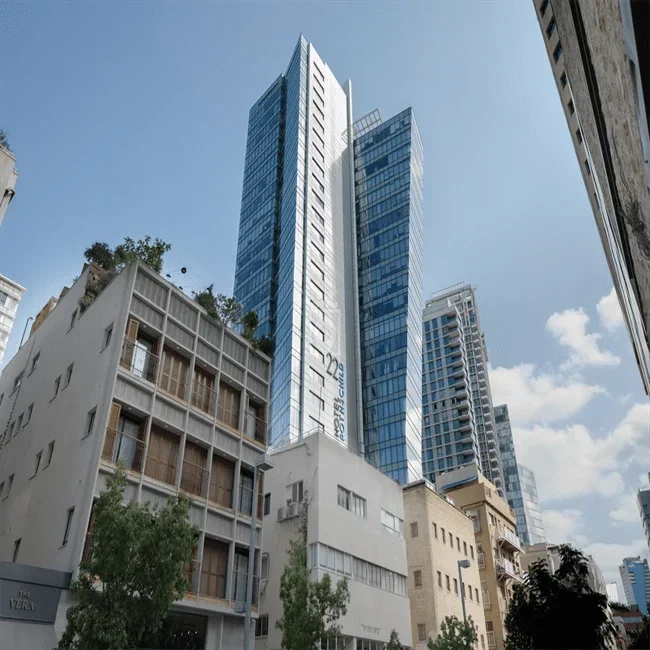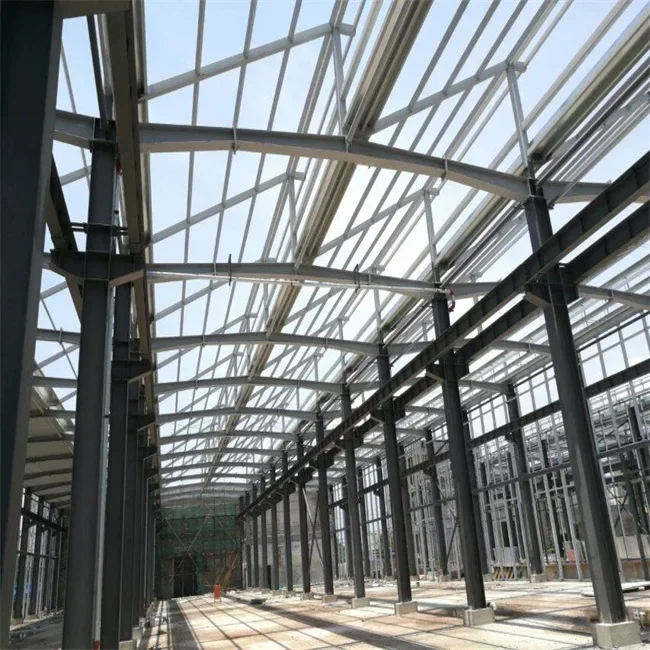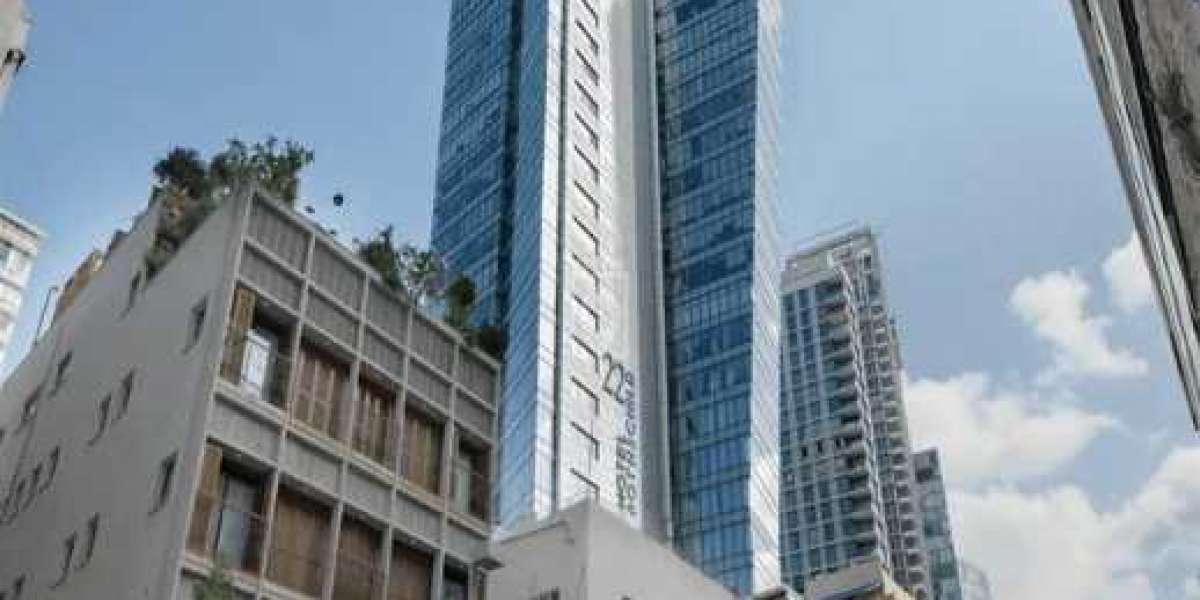Steel structure apartments are revolutionizing urban living. These modern marvels offer unparalleled durability and sustainability, making them a prime choice for developers and residents alike. We'll explore the cost-effectiveness and design flexibility that these structures provide.
As the demand for efficient and resilient housing solutions continues to rise, understanding the advantages of steel structure apartments becomes increasingly crucial. Whether you're a prospective homeowner or an industry professional seeking insights into innovative construction methods, this comprehensive guide will illuminate the compelling reasons why steel structure apartments are shaping the future of urban architecture.
Exploring the Sustainability of Steel Apartments
Recyclability of Steel Materials
Steel apartments are sustainable due to the recyclability of steel materials. When steel buildings reach the end of their lifespan, the materials can be recycled and repurposed for other construction projects. This reduces the demand for new raw materials, conserving natural resources and minimizing environmental impact. For example, when a steel apartment building is demolished, its structural components such as beams and columns can be melted down and used to create new steel products.
The durability of steel structures also contributes to their sustainability. Unlike traditional wood-framed buildings that are susceptible to rot or insect damage, steel structures are resistant to these issues. This means they have a longer lifespan and require fewer repairs and replacements over time. As a result, this longevity reduces the overall environmental impact associated with maintaining residential or commercial spaces.
Minimization of Waste and Environmental Impact
Moreover, steel construction minimizes waste during both the manufacturing process and on-site assembly. Precise planning allows for more accurate material estimates which results in less wastage during production. Since many components are fabricated off-site in controlled environments before being transported for assembly at the construction site, there is less disruption to surrounding areas during building erection.
In terms of energy efficiency, steel apartments offer benefits through improved insulation capabilities compared to traditional building materials like concrete or wood. This enhanced insulation helps conserve energy by reducing heating and cooling needs within these structures.
Furthermore, from an urban development perspective where space is often limited,steel apartments provide efficient solutions due to their ability to accommodate multiple stories without requiring large land footprints - making them ideal for urban areas where land availability may be restricted.
Lastly,steel constructions, including student residences or housing associations built using this method can contribute positively towards obtaining planning approval as they typically align with modern sustainable development goals set forth by local authorities.
Cost-Effectiveness of Prefabricated Steel Buildings
Reduced Construction Time and Labor Costs
Prefabricated steel structures significantly reduce construction time and labor costs. The components are manufactured off-site, allowing for quick assembly at the construction site. This streamlined process minimizes labor hours required for on-site construction, leading to substantial cost savings. The precise engineering of prefabricated steel building packages ensures efficient installation, further contributing to reduced labor expenses.
The efficiency in assembling steel structures not only saves time but also minimizes the need for extensive on-site labor. As a result, project timelines are shortened, reducing overhead costs associated with prolonged construction periods. This expeditious completion can be particularly advantageous when constructing large-scale developments such as apartment complexes.
Long Lifespan and Low Maintenance Costs
Steel's exceptional durability and longevity make it highly cost-effective in the long run. Unlike traditional building materials that may deteriorate over time, steel maintains its structural integrity for decades without significant maintenance requirements. Consequently, property owners benefit from lower ongoing maintenance costs compared to alternative construction materials.
The extended lifespan of steel structures translates into sustained cost savings over the years. With minimal upkeep needs and resistance to environmental factors like corrosion and pests, steel apartments incur fewer maintenance expenses than buildings constructed using conventional materials such as wood or concrete.
Design Flexibility Optimizing Material Usage
The design flexibility of steel structures offers opportunities to optimize material usage effectively, resulting in reduced overall costs during construction. Architects and engineers can capitalize on steel's versatility to create innovative designs that maximize space utilization while minimizing material waste.
Versatility in Design of Steel Structure Residences
Diverse Architectural Designs
Steel structure apartments offer the flexibility to create diverse architectural designs and customizable floor plans. Whether it's a sleek, modern look or a more traditional aesthetic, steel can accommodate various design preferences. For instance, architects can incorporate unique angles and shapes into the building's design, creating visually striking structures that stand out in urban landscapes.
Moreover, modular construction techniques allow for efficient assembly of steel components off-site before being transported to the location for installation. This not only streamlines the construction process but also enables architects to experiment with different layouts and styles without compromising on structural integrity.
Enhanced Aesthetic Appeal
The use of steel in residential buildings facilitates the creation of open spaces and large windows, contributing to an enhanced aesthetic appeal. With steel structures, architects have the freedom to design expansive living areas with minimal obstructions such as support columns. This results in light-filled interiors that provide a sense of spaciousness while offering breathtaking views of the surroundings through generous window openings.
steel's strength empowers innovative designs like cantilevered structures and multi-story buildings. These features add character and uniqueness to residential projects while maximizing usable space within limited plots of land.
Innovative Structural Systems
Incorporating steel into residential building projects allows for innovative structural systems that are not feasible with traditional materials such as concrete slabs. The exceptional strength-to-weight ratio of steel enables longer floor spans without sacrificing stability or safety. Consequently, designers can implement creative floor systems that enhance living spaces by eliminating unnecessary load-bearing walls.
Furthermore, this versatility extends beyond purely residential developments; it is equally applicable to mixed-use structures where commercial spaces coexist with residential levels. By leveraging steel's capabilities, developers can seamlessly integrate different functions within a single building envelope while ensuring structural integrity across all areas.

Advantages of Light Steel Framing Systems
High Strength-to-Weight Ratio
Light steel frame systems offer a high strength-to-weight ratio, meaning they are strong but also lightweight. This characteristic reduces foundation costs significantly, as the lighter weight requires less substantial foundations to support the building. For example, compared to traditional concrete structures, light steel framing can reduce foundation costs by up to 30%. This cost-saving benefit makes light steel framing an attractive option for constructing steel structure apartments.
Excellent Seismic Resistance
One of the key benefits of using light steel infill systems in construction is their excellent resistance to seismic forces. The inherent strength and flexibility of steel make it an ideal material for withstanding seismic activity. In regions prone to earthquakes or other seismic events, such as coastal areas or along fault lines, buildings constructed with light steel framing systems provide superior structural integrity and safety for occupants. This advantage ensures that steel structure apartments can withstand unexpected natural disasters more effectively than traditional construction methods.
Efficient Installation of Utilities and Services
Lightweight materials used in light steel infill enable efficient installation of utilities and services within the building. The design flexibility offered by light steel framing allows for easy integration of electrical wiring, plumbing, heating and cooling systems throughout the structure. As a result, builders can install these essential components quickly and easily during construction without compromising on structural integrity or architectural design. This streamlined process saves time and labor costs associated with installing utilities in traditional concrete or wood-framed buildings.
Thermal and Acoustic Performance in Steel Construction
Superior Thermal Performance
Proper insulation is crucial in steel apartments to ensure superior thermal performance. This reduces energy consumption, leading to cost savings for residents. By effectively insulating the building, steel construction helps maintain a comfortable indoor temperature regardless of external weather conditions. The use of advanced insulation materials such as spray foam or rigid foam boards can significantly enhance the thermal efficiency of steel structures.
Steel's inherent properties also contribute to its excellent thermal performance. With lower thermal mass compared to traditional construction materials like concrete, steel allows for quicker heating and cooling of interior spaces. This means that occupants can enjoy a more responsive indoor climate control system, which further reduces energy usage.
Insulated panels used in steel construction provide an additional layer of protection against outdoor temperature fluctuations. These panels are designed with high-quality insulation material sandwiched between two layers of steel, ensuring minimal heat transfer through the building envelope.
Soundproofing Techniques
In addition to its thermal benefits, soundproofing techniques play a vital role in creating a quiet and comfortable living environment within steel apartments. Steel's structural integrity allows for innovative soundproofing solutions that minimize noise transmission from external sources and neighboring units.
Sound-absorbing materials integrated into wall cavities and floor assemblies help dampen airborne noise within the building, enhancing overall acoustic comfort for residents. Resilient channels installed between drywall partitions reduce structure-borne vibrations caused by footsteps or other impacts.
The combination of these soundproofing measures ensures that occupants can enjoy peace and privacy within their homes despite potential sources of disturbance outside or inside the building.
Effective Temperature Regulation
Steel's unique properties enable effective temperature regulation within buildings constructed using this material. Its low thermal conductivity facilitates efficient heat dissipation during warm weather while retaining warmth during colder periods. By leveraging these characteristics, developers can design steel structures with optimized ventilation systems that promote natural airflow while preventing excessive heat loss or gain. Moreover, innovations in infill walls and floor slabs allow for enhanced insulation without compromising on space efficiency – an essential consideration when designing multi-story apartment buildings.
Fire Safety Measures for Steel Structured Living Spaces
Fire-Resistant Coatings and Materials
Steel structure apartments benefit from fire-resistant coatings and fireproof materials, significantly enhancing the safety of occupants. These specialized coatings and materials are designed to withstand high temperatures, thus slowing down the spread of fire within the building. For instance, using intumescent paint on steel beams can provide crucial protection in the event of a fire by expanding when exposed to heat, forming a protective insulating layer.
In addition to these coatings, incorporating fireproof materials such as gypsum boards into the construction process further bolsters fire resistance. Gypsum boards are widely used in steel apartment construction for their exceptional fire-retardant properties. They act as effective barriers against flames and heat transfer, safeguarding both the structural integrity of the building and its occupants.
Furthermore, floor joists made from steel contribute to overall fire safety, as they do not burn or add fuel to a potential fire. This is particularly important in multi-story steel apartments where each level's flooring system plays a critical role in containing fires within individual units.
Inherent Fire Protection of Steel
The non-combustible nature of steel provides an inherent advantage. Unlike wood or other organic materials commonly used in traditional construction methods, steel does not contribute to fueling fires. As a result, residents living in steel structure apartments can have increased peace of mind knowing that their homes offer superior protection against potential fire hazards.
Moreover, internal walls and floors made from steel also play a significant role in maintaining fire resistance throughout different areas within an apartment complex. These components effectively compartmentalize spaces, preventing fires from spreading rapidly between units or across different levels within the building.
Lastly, adherence to strict building codes and regulations ensures that comprehensive fire safety measures are integrated into every aspect of designing and constructing steel apartments. From specifying minimum requirements for wall thicknesses to establishing guidelines for overall floor zones on each level—these regulations prioritize occupant safety by addressing key factors related to mitigating fire risks.

Corrosion Protection and Maintenance of Steel Apartments
Protective Coatings
Protective coatings, such as galvanization, play a crucial role in preventing corrosion in steel structures. These coatings act as a barrier against environmental elements, effectively extending the lifespan of steel apartments. For example, galvanized steel contains a layer of zinc that acts as a sacrificial anode, protecting the underlying steel from corrosion. This process significantly reduces the risk of rust and deterioration.
Regular inspections are essential to identify any signs of corrosion or damage early on. By conducting routine checks, property owners can address any issues promptly before they escalate into more significant problems. Implementing maintenance routines ensures that any protective coatings remain intact and effective over time.
Proper Drainage Systems and Ventilation
Proper drainage systems are vital for mitigating moisture-related corrosion issues in steel buildings. Effective drainage helps prevent water accumulation around the structure, reducing the risk of corrosion caused by prolonged exposure to moisture. Similarly, adequate ventilation within the building is crucial for minimizing humidity levels and preventing condensation, which can lead to corrosive conditions.
Conclusion
The exploration of steel structure apartments has illuminated their sustainability, cost-effectiveness, design versatility, and numerous advantages such as thermal and acoustic performance, fire safety measures, and corrosion protection. With these insights, it's evident that steel apartments offer a compelling solution for modern living spaces, addressing key concerns while offering a range of benefits.








